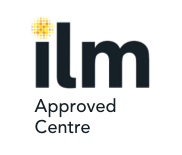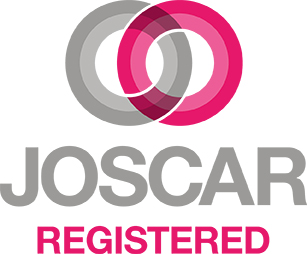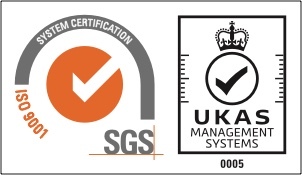
Give your staff a toolbox of techniques to help them continuously improve!
In today’s global economy, organisations face intense competition from other companies. Business leaders are under constant pressure to remain competitive and to decrease operating costs, whilst at the same time increasing productivity. Only by improving your business processes can you make this achievable.
In this blog, you will learn about:
- What business process improvement is
- How Lean Manufacturing and Six Sigma techniques fit into process improvement
- The benefits to your business of adopting a culture of continuous improvement
- How your business can benefit from process improvement training and practitioner courses from GBS Corporate Training
The demand to improve your business and key processes continues to increase as customers’ expectations change, new technologies emerge and competition grows. As an effective way to establish continual improvement, many business leaders are seeking the benefits that Business Process Improvement can provide such as enhanced operational efficiency, improved customer service and increased levels of innovation across all areas of the organisation.
“Measurement is the first step that leads to control and eventually to improvement. If you can’t measure something, you can’t understand it. If you can’t understand it, you can’t control it. If you can’t control it, you can’t improve it.” H. James Harrington, Author & Management Mentor
GBS Corporate Training offer a suite of training options that provide solutions at all stages of business process improvement. Our range of courses are designed to give your employees the knowledge and skills to be able to analyse and redesign your processes to remain competitive and avoid unnecessary waste. We are able to consult with clients across all industries to focus upon specific types of process and performance challenges they may face, using a breadth of effective tools and techniques.
What is Business Process Improvement?
Business process improvement (or business process management) is the pathway through which business leaders seek to improve organisational performance by analysing, designing, implementing, monitoring, controlling and modifying operational business processes.
Process Improvement often involves a systematic approach which follows a specific methodology. Examples might include “benchmarking” or “lean manufacturing”, each of which focuses on different areas of improvement using different methods to achieve the best results. Process Improvement methodologies such as Lean and Six Sigma aim to optimise processes, which can increase organisational efficiency and profitability by enhancing business processes with three important elements – agility, visibility and efficiency.
Processes can be modified, complemented with sub-processes, or even eliminated for the ultimate goal of improvement. The transparency and agility that process improvement brings to improving processes helps organisations monitor their current processes, make needed changes to maximise productivity and profitability, and better align business processes with business objectives.
Sound complicated? Well, despite the number of specific disciplines that can be adopted to achieve process improvement, it is fairly easy to understand if you just consider these three simple questions:
1. What is your purpose? A process is a series of actions or steps taken to achieve an end. And that end is all important. If your process is to work well you must be very clear what the thing is that you are producing. The “purpose” of the process should be obvious.
2. Who is your customer? The only person who can tell you if you are meeting your purpose is your customer. That is the person you are working for (it could be an internal or an external customer).
3. Is your customer happy? If everything your process does focuses on meeting that customer’s need - nothing more and nothing less - and there is no way you could make it better, then you have the perfect process!
So, in its simplest form, process improvement is simply about changing the way you do things to meet customer needs.
Process Improvement is an ongoing practice (i.e. it should be continuous) and should always be followed up with the analysis of tangible areas of improvement. Hence, the terms Continuous Process Improvement or Continuous Improvement, which are the most well-known and used terms used within Quality practice.
When implemented successfully, the results can be measured in the enhancement of product quality, customer satisfaction, customer loyalty, increased productivity, development of the skills of employees, efficiency and increased profit resulting in higher and faster return on investment (ROI).
So – how does Lean Manufacturing and Six-Sigma fit in?
You may have heard the terms ‘Lean Manufacturing’ or ‘Six Sigma’ and wonder where they fit into the process improvement-jigsaw.
Lean is a customer-centric methodology that is used to continuously improve processes through the elimination of waste. It maximises customer value whilst minimising waste and non-value-added activities. Lean is fundamentally about increasing customer value in an organisation with proper respect for people, and is a philosophy-in-itself for managing a business.
“The most dangerous kind of waste is the waste we don't recognise." Shigeo Shingo, leading expert on manufacturing practices and the Toyota Production System.
Six Sigma seeks to improve the quality output of a process. This methodology focuses on identifying and removing the causes of defects (errors) and minimising variability in processes to drive improvement. Six Sigma drives improvements by managing variation and reducing defects within a process.
Six Sigma involves developing a group of people within your organisation (often referred to as "green belts" and "black belts") who are experts in quality management methods utilising empirical, statistical techniques. Six Sigma methods were first developed by Motorola and Allied Signal, and were refined and popularised by General Electric in the mid-1990s.
Application of Lean and Six Sigma techniques will achieve significant improvement in process quality. It makes spotting and handling quality issues easier and allows for implementation of processes that are less prone to such issues, with built-in mistake proofing and a better ability to identify the root causes of the problems.
Benefits of adopting process improvement on a continual basis
There are a variety of benefits to companies that adopt a philosophy of continuous improvement, with process improvement and management, or application of lean and related principles. Here are just a few:
1. Agility: Processes can easily be customised to suit the requirements of your organisation, so you get the flexibility of making changes to processes with minimal cost
2. Productivity: Process improvements such as the removal of bottlenecks, introduction of parallel processing, and elimination of redundant steps, can easily be achieved. This improvement will allow employees to spend more time on other important activities, which translates into increased productivity and reduced waste
3. Efficiency & Reduced Risks: The visibility of business processes allows for concentration on inefficiencies, resulting in the creation of better-designed, executed and monitored processes which can help reduce business risk
4. Compliance & Transparency: Organisations need to be compliant with industry regulations, so by integrating compliance into the process life cycle, the resulting organisational processes will become transparent and visible to all employees
5. Employee Satisfaction: By eliminating unnecessary red tape, employees are allowed to focus 100% on their work. Also, potential process automation cuts down on a lot of repetitive work and makes information access easier. This in turn makes for increased productivity and a happier workforce
6. Customer Focus: With leaner processes and increased productivity, employees are better able to focus on the customer. They are able to focus on activities that deliver the right results every time for customers and stakeholders
7. Sustainability: Business Processes are continually improved to adapt to changing organisational conditions so that they can continue deliver expected results
8. Measurability: All processes can be measured end-to-end and tracked against expected results. This helps to further manage both people and processes
What are the benefits of providing process improvement training within your organisation?
Processes in businesses encompass both functional and organisational boundaries. As a result, effective and reliable analysis and improvement of a business process is best achieved through the participation of cross functional teams of employees, who are responsible for the daily operations of a business.
As a form of professional development training, there are many advantages of process improvement training from GBS. The participants of our courses learn the skills to identify what is and what is not relevant to the business, how to identify changes required in business processes and how such changes will affect the business at large.
GBS’ business process improvement training solutions are specifically designed to equip business professionals with business process analysis tools. Our courses involve teaching participants the key steps in effective business process improvement and re-engineering, and how to identify what is important to the business and its customers.
Another main objective of our business process improvement training is to assist a business or an organisation to meet the demands of its customers, as well as to fulfill its strategic and tactical goals in a more effective manner.
Our courses are designed mainly for professional development and are suited for individuals and teams who could benefit from practicing together with the tools and techniques taught in the process improvement training.
The completion of two of our Practitioner level courses, together with demonstrable work experience, can lead to the gold standard Chartered Quality Professional (CQP) status, which is recognised alongside other roles with Chartered status.






